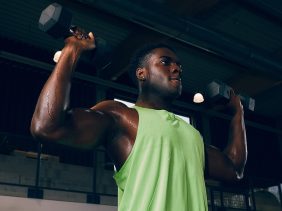Your New Favorite Way to Make Workouts More Effective
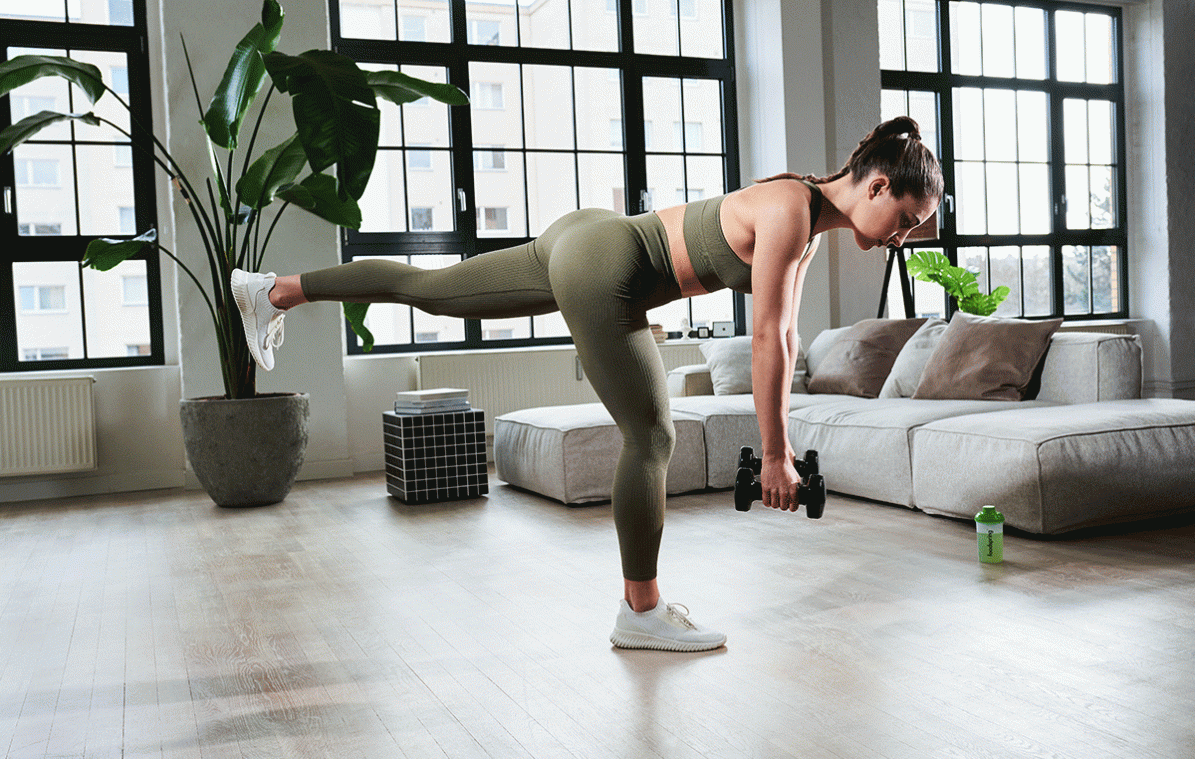 © foodspring
© foodspring
Squats, deadlifts, and bench presses – the efficient classics for building muscle and strength are already part of your training routine, of course! But what if you could make your strength training even more effective and increase your performance not only at the gym, but also in everyday life or for other sports like basketball, boxing and soccer?
There’s no magic exercise, mysterious fitness trick, or secret ingredient behind it – although our Whey Protein is always a good choice when it comes to building your muscles*! Still, the tip is simple. It’s called unilateral training. All this means is, unlike your usual, presumably bilateral workout, you aren’t working with both sides of your body at the same time. With unilateral training, you train first one side, and then the other.
A concrete example of this is to do split squats or lunges instead of a classic squat. This way, the stronger leg can’t compensate for the weaker one. Wondering why and how this works? Read more. We’ll enlighten you on the advantages of unilateral training, plus show you which exercises are most worthwhile.
Why would you train unilaterally?
When you’re training bilaterally, you’re loading the muscles of both sides of the body at the same time. However, your stronger side usually helps out the weaker one, so it works more and stays stronger. But when you train each side one after the other, i.e. unilaterally, you can avoid this imbalance. Wondering why this is so important? Here are the 5 primary arguments for unilateral training.
- It’s more natural
Both in everyday life and on the playing field, how often do you use both arms or both legs at the same time? Whether you’re carrying a bag, walking up and down stairs, kicking your punching bag, or throwing a ball, you’ll find that most of the movements you make are unilateral. So, it’s only natural to perform your workout in the gym unilaterally as well, right?
It’s not only your workout, but also your diet that should be as natural as possible. How about replacing your sweet, sugary spreads with a healthier alternative? Our Protein Cream comes without unnecessary additives and still provides full, indulgent flavor.
- You equalize side differences
You’re probably already aware of it, but we tend to favor one side when we move and exercise, and that side usually helps out the weaker one in bilateral training. For example, right-handed people often use their right arm to compensate for what their left arm can’t do on its own. Unilateral training is the solution to rebalance this difference. By doing this, you load both sides equally, which, incidentally, can also reduce the risk of injury. This is also what functional strength training is all about.
- You increase your muscle strength more efficiently
Intense unilateral training leads to a “cross-education” effect, according to a meta-analysis published in the European Journal of Applied Physiology. This means that not only does the side you train see increased strength, but the other, untrained, side also benefits, too.
- You train your coordination
Lunges and similar movements require coordination skills, especially when you perform them with weights. Specifically it’s your intramuscular coordination, which is the interaction between your muscles, that kicks into high gear.
- Your six pack is always working, too
Your core must compensate for the one-sided load during a unilateral workout. And when you keep your abdominal muscles active throughout, you’re getting a real core workout at the same time! A happy byproduct of unilateral training, and we’ll take it!
Want to get your core really burning? Challenge yourself with our foodspring workouts!
How do you train unilaterally?
This upgrade for your strength training is very simple. Instead of training both sides at the same time, you alternate, starting with one side, then the other. As always, however, there is no one right way for all exercisers. Your training plan should always be based on your individual goals and regularly expose your body to new stimuli. So it’s enough to start by doing 1-3 exercises in your plan unilaterally and try out which combination of unilateral and bilateral works best for you.
Intensive, unilateral exercises
You can make a unilateral exercise out of almost any exercise. We’ll show you some classics that will make your muscles burn (and grow!).
#1 Lunge
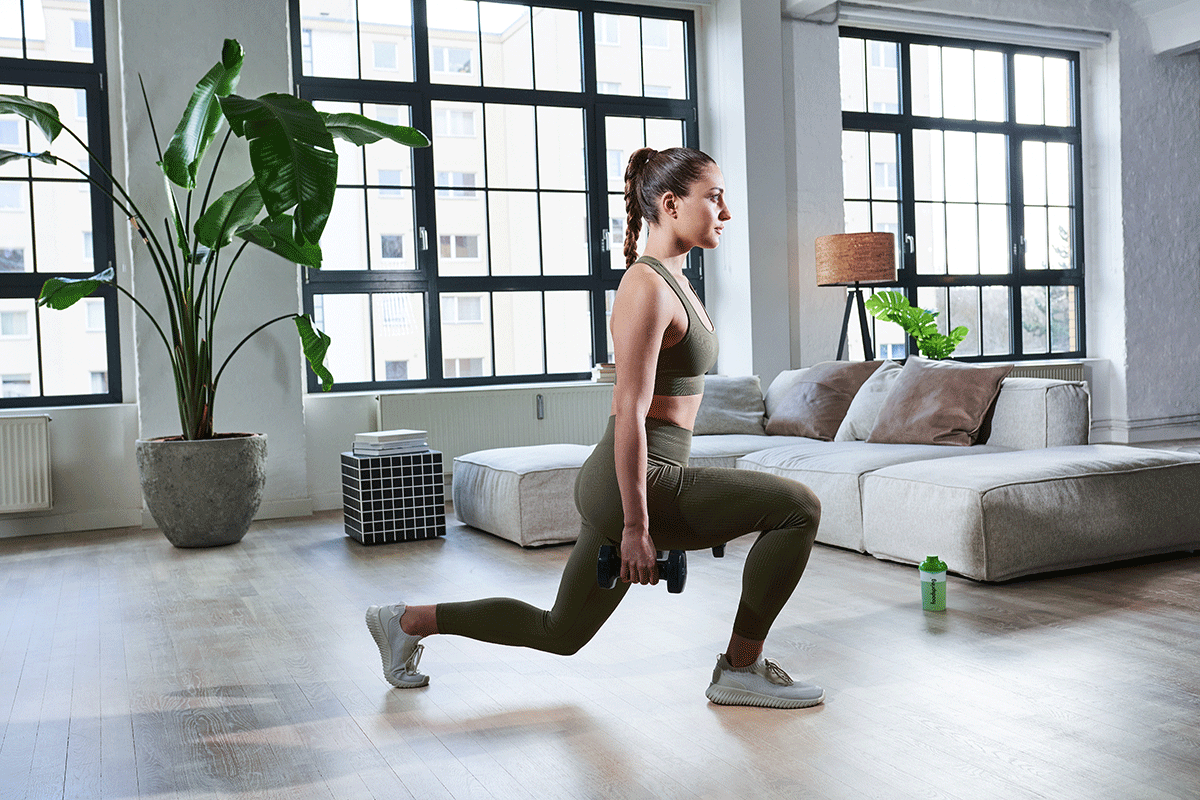
Lunges, or split squats, can be performed in many variations. These are great for strengthening the muscles around your knees particularly efficiently. They’re also helpful to train your balance.
Muscles: Thigh and gluteal muscles.
Breathing: Inhale as you lower, exhale as you lift back up.
Note: Shift your weight to your front leg. Contrary to the old fitness myth, you can easily slide your knee over your toes. Rather, make sure your knee stays stable and doesn’t knock inward.
#2 Standing deadlift
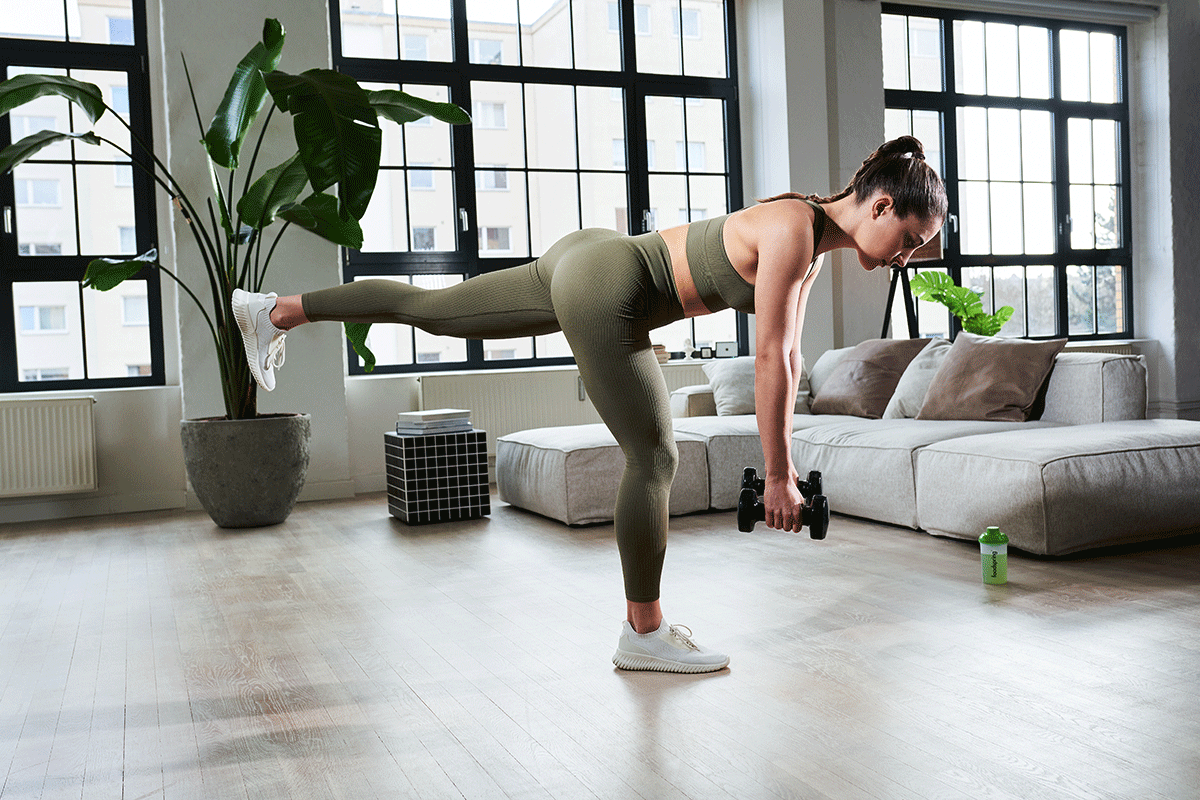
The standing deadlift (or single leg deadlift), like the deadlift, primarily involves the muscles on the back of your body. Compared to the classic, there’s a higher coordinative demand, not to mention the balance and stability needed in the standing leg.
Muscles: Back of thighs (hamstrings), glutes, entire torso.
Breathing: Inhale as you lower, exhale as you return upright.
Note: Make sure that your back stays long and you neither arch nor round your upper back. Tighten your glutes and abs, and pull your shoulder blades together.
#3 Rows
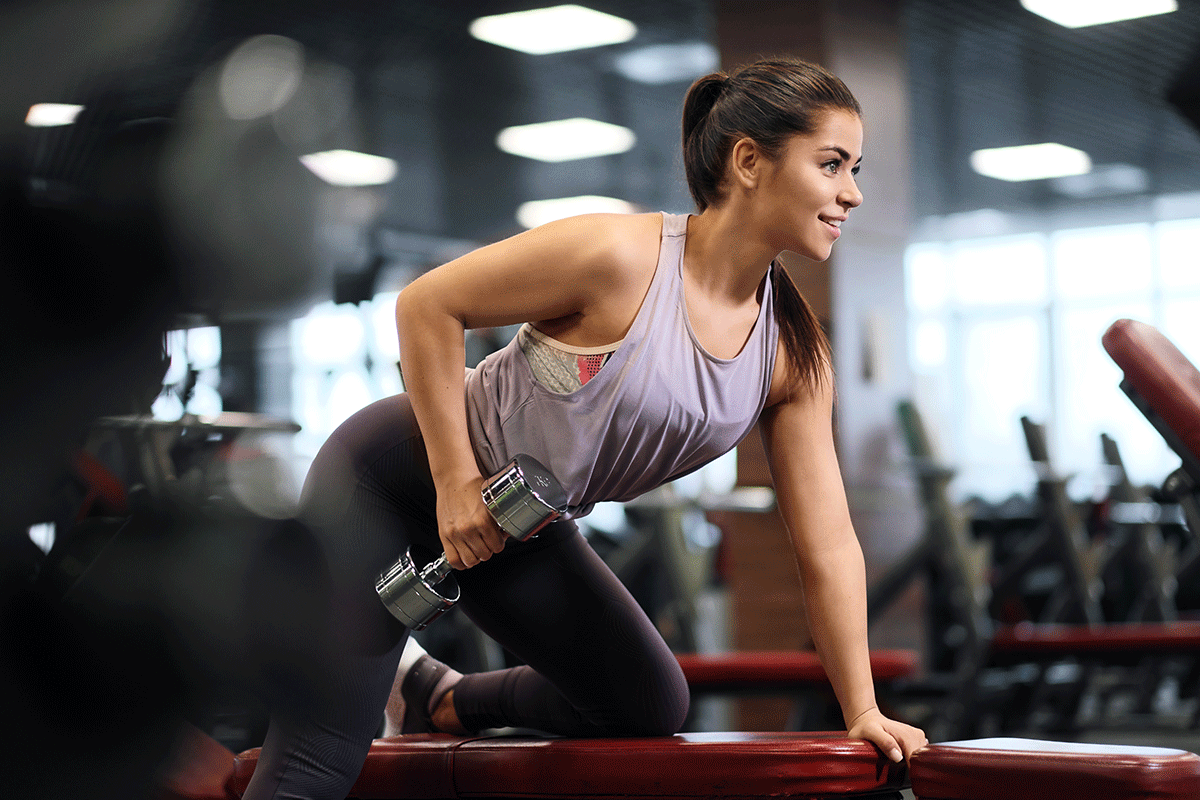
There are also countless variations of rows. You can also do them without a bench by bringing yourself into a wide, stable stance, lean forward, and extend your free arm for balance. But if you decide to perform this exercise after the standing deadlift, use a bench to rest one knee, so you can relieve your lower back, since both of these exercises demand quite a lot from it.
Muscles: Back muscles, biceps, back shoulder, abdominal muscles.
Breathing: As you exhale, pull the weight in towards your torso.
Note: You can perform the exercise with a dumbbell or with a kettlebell, which requires even more torso tension. Make sure your back is straight here as well. If you start to arch or round your back, reduce the weight.
#4 Glute Bridge

This exercise is the perfect alternative if you don’t feel like you have the balance for the standing deadlift. This way, you’ll also hit the muscles on the back of your body, but there’s less tension. Does that mean it’ll burn less? Definitely not.
Muscles: Back of thighs (hamstrings), glutes, entire torso.
Breathing: Inhale as you lower, exhale as you lift.
Note: You can make the exercise harder by placing your foot on a chair or coffee table.
Training unilaterally can be very challenging, especially in the beginning. So, definitely allow yourself enough time for rest and regeneration after your workout. A hot shower followed by relaxing on the couch, preferably with our Recovery Aminos – an unbeatable combination.
More things to know from foodspring:
- What to eat after a workout? The essentials are all in here
- 5 Reasons You Can Lose Weight with Strength Training
- Everything You Need to Know About Muscle Structure
- Muscle building workout plan – A quick & healthy way to build mass
- Feel Your Best with These Easy Mobility Exercises
*Proteins contribute to an increase in muscle mass.
Sources for this article
We at foodspring use only high-quality sources, including peer-reviewed studies, to support the facts within our articles. Read our editorial policy to learn more about how we fact-check and keep our content accurate, reliable, and trustworthy.



























